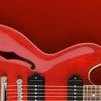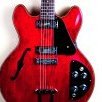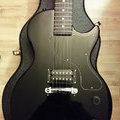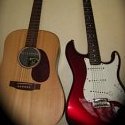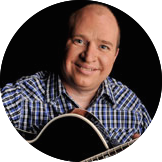Leaderboard
Popular Content
Showing content with the highest reputation on 02/22/2019 in all areas
-
Jut FYI, Zoom is coming out with an incredible little interface which has its own DSP, and will be used as a direct plug in for a PC/Mac. It will let you use a huge variety of amps, cabs and effects from within your PC/Mac and looks like an incredible little piece of hardware. No amp/mic needed at all. Just plug your guitar into the little device and then device into PC/Mac and you can record quietly or through monitor speakers. Has headphone line out, aux line in and USB - C cable out into the computer. Best of all, the price is ridiculous. $100. It's coming out in late March and I fully intend to get one and test it out. When I get it, I will put it through its paces and post a detailed review. Here's a little overview:3 points
-
Dave, I can't stress enough how helpful recording and listening to oneself is. I suspected it would be but the extent to which it was helpful surprised me. And depressing. Sure, one can catch mistakes while playing but in listening to the playback I heard other issues that I hadn't picked up on while live. Let us know how the recording goes for you. We may pick your brain some on that "hardware/software side". I've been away from recording for a while and finding some relearning. But I need to follow my own advice.2 points
-
Here's a very interesting article from Justin Beckner at Ultimate Guitar. It's also nice to see the specific color history at the end. Pros And Cons Of Popular Guitar Finishes Lacquer or Poly? Once a guitar has been built, it will generally get a finish of some sort. In this article, we will discuss the reason for a finish on your guitar and some of the more common types of finishes we see. The finish of a guitar is something that is much more important than simple aesthetics. Although it’s true that a guitar’s finish can be used to enhance the natural beauty of the woodgrain, a guitar’s finish is meant to seal the wood, first and foremost. Lacquer vs. “Poly” The two most common guitar finishes are lacquer and “poly”. The debate on which one is superior rages on in forums across the internet. The truth is that both have pros and cons. There are several types of lacquer finishes but, when we are talking about guitars, we are generally talking about either acrylic or nitrocellulose paint. This is the stuff we use on our vintage instruments. Back in those days, we borrowed a lot from the automotive industry. Not only the process and technique of painting, but the colors too. You might have noticed that a lot of the classic Fender colors are very similar to the colors used by GM, Cadillac, and Ford back in the 50’s and 60’s [more on that later]. Nitrocellulose paint is really some nasty stuff for the environment and for our health. I sprayed my fair share of this paint on guitars and cars over the years and I can attest to the fact that if you don’t wear proper masks and safety gear, you will regret it later in life. If you’re going to be spraying any kind of paint, especially nitro, get yourself a good respirator and wear it. Still, nitrocellulose paint is still preferred by a lot of people. It is historically correct in terms of what was used on vintage guitars. Nitrocellulose paint will also age and wear and is great for players who like the road worn or patina look. It is a much softer finish than poly and is often thought to let the wood breathe and age (dry out). Because lacquer goes on much thinner, it is said to give the instrument a more natural tone. The first time I sprayed a lacquer on a guitar, I was surprised by how thin it went on. I had to apply a LOT of coats before I could buff it down to a smooth finish. So it requires a little more prep to the wood before you apply it. Nitrocellulose lacquer can also crack when the wood expands and contracts. I live in northern Minnesota where we can have swings of 80 degrees within the span of a few days and humidity fluctuates drastically between summer and winter. Poly finishes don’t typically get this effect because it protects the wood from these changes in humidity, particularly. Many guitar companies started moving away from lacquer finishes in the mid to late 60’s. One of the most popular substitutes was polyurethane, today it seems just about any non-lacquer finish is referred to as a “poly” finish. Poly-based can be thought of as plastic-based finishes. It goes on very smooth and is much more durable and are less prone to aging. These finishes are pretty much the same stuff you’d find on a bar top or a gymnasium floor. The reasons for the move from lacquer to poly finishes are easy to find, poly is cheaper, safer, and easier to apply. For companies that mass produce their instruments, this was a huge bonus. Some of the guitars I’ve shot with poly paint, I just use a one-stage equipment enamel that you could buy at any paint shop. Critics of poly finishes will cite that the thicker finish diminishes and dulls the guitar’s tone (natural resonance). It doesn’t age the wood because it holds in whatever moisture was still left in the wood. Another thing that critics (and techs) don’t like about poly finishes is that it is often very difficult to repair finishes such as dents and scratches. The poly doesn’t match up as well as the lacquer finishes do. How much can a guitar’s finish effect the tone? The answer is, as always, it depends. If we were to paint a guitar the same way we paint a car, we would first seal it, then we would spray some sanding primer down, often times this requires several coats, most of which gets sanded off. This is to ensure a smooth surface. On vehicles, I’ll get all the way down to 600 grit sandpaper when sanding this down. Having a smooth finish becomes even more important when the color you’re spraying is a solid dark color. Black, for example shows any little imperfection in the body. Once you’re content with the smoothness of the body, you can spray your paint on there. You can use a “rattle can” – your standard hardware store spray paint. But generally professionals will use a paint gun and spray it that way. We talked about the two big ones – lacquer and poly, but I would be remiss if I didn’t mention oil finishes. Tru-Oil, Tung Oil, Danish Oil are the products most people use. It’s not a bad product, it is commonly used to finish all sorts of wood such as gun stocks and vintage furniture. It does a nice job of enhancing the grain of your guitar. It’s fairly easy to apply. People like to use this on the necks of their guitars. Where do all these colors come from? Let’s talk about colors for a moment. Most of my painting experience comes from painting classic cars. So it’s no surprise to those who know me that I’m very interested in the origins of some iconic colors that have been used on guitars over the years. I should point out that it’s not all about the color, it’s also about the application techniques, the primer, and other factors that can affect the color and texture of the finish. But as for the base colors, most of them were taken directly from color books of major car manufacturers. Fiesta Red, for example, a common color used by Fender instruments such as the iconic 1962 Stratocaster, was a color with the DuPont code 2219-H. It was available on the 1956 Ford Thunderbird and Fairlane models. “Surf Green” was a Chevy color in 1957 while “Foam Green” was a color Buick used in 1956. Colors like Lake Placid Blue (Metallic), Daphne Blue, and Sonic Blue were all colors used by Cadillac in the late 50’s. Olympic White, Dakota Red, and the Metallic Firemist Gold and Silver were also Cadillac colors. Interestingly enough, we still don’t know which Black Fender used back in those days. Most people believe it closely matches the Black Corvettes used in ’54 and ’58 or Cadillac in ’58. It’s pretty much impossible to figure out which one Fender actually used. Fender decided to discontinue painting guitars Fiesta Red, Dakota Red, and Foam Green in 1969. Candy Apple Red was a custom color that used a metallic base coat, a translucent color coat, and a clear top coat. It was later applied to The Ford Mustang in 1966. Gibson was no stranger to sharing colors with the auto industry. Their Golden Mist color is a ’59 Oldsmobile color. The GoldTops used a nitro clearcoat with a crescent bronze powder mixed in (DuPont code #256 is the code for the powder, in case you were wondering). Mixing powder (or metal flake) into clearcoats is a pretty common practice but can be tricky to do and requires some training or experience shooting that sort of paint.2 points
-
Yes with an exception In Session 1 of Song Hits The Full version of You Got It" by Roy Orbison and "Hit Me With Your Best Shot" by Pat Benatar Steve wanted them in later sessions but royalties would have to been paid twice for his beginner version and later on the full version. So the full versions are in Session 1. You don't have to play those 2 full version songs till say Session 11+ Steve does sort of say this on the DVD when you watch it2 points
-
2 points
-
Hi Everyone, I am new to the Guitar world. I have always wanted to play guitar. Finally, my journey has started this week with Learn & Master Guitar - session 1. Being a lefty and having never played any instrument before, the road might be bumpy, but I will enjoy it all along! I joined this discussion board after reading few articles at https://community.learnandmaster.com. Happy playing!!!1 point
-
Long time ago (before Obi Wan..) Peter Traynor.. which I did meet in person... made some pretty darn good amps for a startup gear rental company called Yorkville Sound which also started Long and McQuade music store and also started Traynor Amp's legend had it that Pete dropped some of his amps off a roof of the warehouse he was designing and building in. which started a 'tough as all .. ' slogan for the amps. Pete's gone now.. but the name still lives on ,, this is an older video.. but .. wonder if it's true.. watch here.1 point
-
@Dave Hi Dave; So, after working with the recording gear for a month or so, I can say that the Focusrite Scarlet 2i2 "Studio" kit (with the interface, headphones and mic) is a very good way to go. The gear is very well built, connectors, cables, switches, knobs etc. all good quality. There is basically no "latency" (lag time between input and record/monitoring) The mic is quite sensitive and gets good response,, and I like the headphones which are very clear, light and comfortable to wear. Any issues I've had (and have) have been with the DAW's. I tried ProToolsFirst, and struggled with it for about a month, downloading a load of plug ins (the free "effects" came with the Focusrite) only to find out quite a few dont work with ProTools. I found ProTools difficult to understand and work with so my buddy DougH suggested I go with Reaper. I did and found it much easier to understand and use, with learning videos much better on the Reaper website and on private YouTube channel called Reaper TV some really good videos. Reaper can be very complex too, with tons of options and customization, but you dont need to use a lot of it to do simple recording 1 track or practice with the built in metronome. I learned how to record 2 tracks and edit/produce 2 songs so far (they are on Member Recordings). One bonus was that a lot of the plug in's I downloaded from Focusrite;s "my softare" page work with Reaper. (bought separately these can cost hundreds $$$) You can get by with just a basic knowledge of Reaper and get acceptable results for a solo guitar player like most of us. Or of course you can go really deep and produce studio quality recording. Having said that, I am having some issues with Reaper... I find it freezes up on me sometimes and wont play back or record properly. I've also noticed YouTube videos dont play properly while Reaper is running.. but this could just be my machine. The program is huge and demand a lot of computing power (I think) so dont run anything else while using it. Recording has really forced me to pay close attention to my playing and I'd say overall even at this early stage I'd say it was well worth it. Just be prepared to spend quite a bit of time learning how the hardware and especially your chosen software works. If you're a computer guy then maybe less so... (I didnt try Ableton Live Lite which is free too... folks say its complicated,; You can use Garageband if you have a Mac) I havent' used my amp since... I just play through the interface mostly, so for quiet practice it's really good too. My Soundcloud channel, hear my songs ;https://soundcloud.com/search?q=neiles335 I'd say for very little money, go for the kit! (unless you have a good mic and headphones already then just the Scarlet will do fine). ( I paid $279 for the kit plus $39 for a good telescoping mic stand, (plus tax) at LMQ) Regards; Neil (thinking of my next recording project)1 point
-
I think you had enough history on Yorkville I can't find the spot.. but Pete had built a arena system for one of those 12hr concerts and all his amps started blowing up. the stress was so much.. he quite Yorkville.. sold all his investment in it.. and lived on an island in Northern Ontario for the rest of his days.. sort of Howard Hughes..1 point
-
Actually the night I met Pete Traynor,, I also me Jack Long If anyone is interested Yorkville Sound posted some time ago a "History of Yorkville Sound" .. 56 Pages long. but I'll post just a few excerpts here1 point
-
Hey Sandy, Thanks for the information and encouragement! I will definitely enjoy the journey. My home life is pretty busy, so my guitar time is my "me" time to relax and do something I enjoy. I really like the videos with Steve. He makes it seem so personable. Like I'm actually taking a lesson from him. Well I guess I am, but you know what I mean. I also like this guitar gathering site. It is so great to know that there is a whole community on her that is ready and eager to help if I have questions or problems. Thank you to you, Steve, and everyone on her that makes this such a wonderful learning experience and environment. Maybe I'll update you a once and a while on my progress. Still fiddling around in session 1. I bought the hit songs book and Cd's also. I can play (the term play used very loosely) "You Got It" by Roy Orbison and "Hit Me With Your Best Shot" by Pat Benatar. Anyway, I'm having a great time. Jeff1 point
-
@Funkcanna Great job with Minuet C! @S Bach I suggest using a metronome and tapping your foot to help with the timing issues, rests etc. Try for a flowing melodic line once you get the tune "down" . Eventually you" ll be playing this from memory.1 point
-
Hey everyone, I don't have the ability to play difficult pieces (yet), so spend quite a lot of time trying to play simple pieces well. This song is fairly simple, but I wanted to work on maintaining an even fingerstyle arpeggio tempo (without a 'nome) whilst maintaining a gentle, but controlled vocal. I usually record at least some of my attempts, because I find the instant feedback really helps me to learn and improve (even/especially if it sounds really bad). Anyway, I was quite pleased with how this session went. This is one, continuous 'live' take (one of about 6, the others were not so good!) that I simply recorded on a Zoom portable recorder and then I uploaded it into Logic just to add a bit of compression and gain to bring the levels up. Ian1 point

